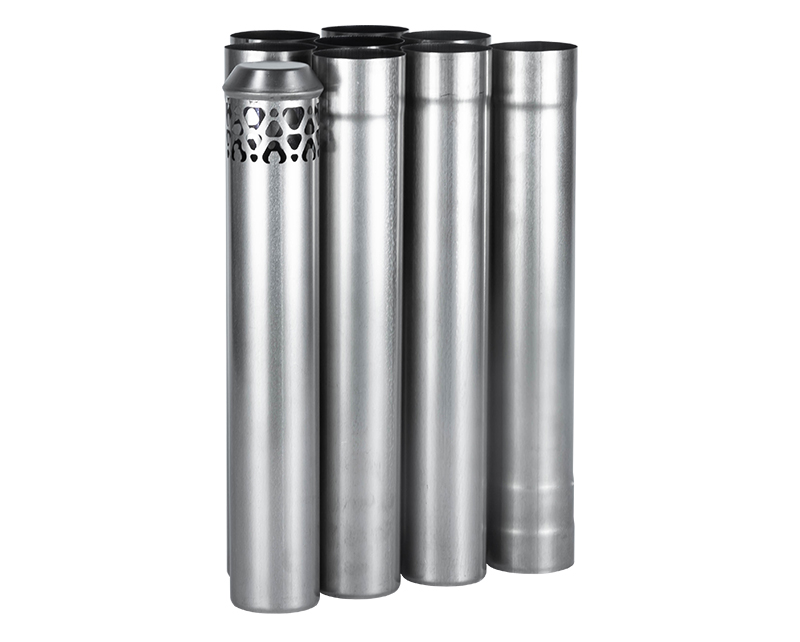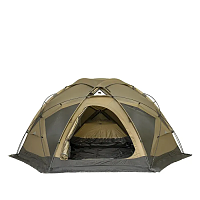Cart
How to Install and Maintain Outdoor Wood Stove Pipes for Safe and Efficient Heating

Installing outdoor wood stove pipes requires careful planning and attention to detail. From choosing the right materials to understanding the proper placement and clearance requirements, there are several factors to consider to ensure your stove operates safely and efficiently.
Maintenance is equally important to guarantee the longevity and optimum performance of your wood stove pipes. Regular cleaning and inspection are crucial to remove creosote build-up and prevent chimney fires. Additionally, understanding how to troubleshoot common issues like leaks or smoke backflow is vital for a trouble-free operation.
Whether you are a seasoned DIYer or a first-time wood stove owner, this article is packed with valuable tips and step-by-step instructions to help you install and maintain outdoor wood stove pipes like a pro. Stay warm and stay safe!
About POMOLY
Pomoly is a leading camping brand specializing in hot tents and tent stoves. We also sell tent stove accessories, including outdoor wood stove pipes, and they are synonymous with high quality. We are camping life explorer, Follow Page / Join Group, let's make camping enjoyful together!
Types of outdoor wood stove pipes
Proper installation and maintenance of outdoor wood stove pipes are essential for several reasons. First and foremost, it ensures the safety of your home and family. Incorrect installation or neglecting maintenance can lead to chimney fires, smoke backflow, or even carbon monoxide poisoning.
In addition to safety, proper installation and maintenance also contribute to the efficiency of your wood stove. When pipes are installed correctly, they create a clear and unobstructed path for the smoke to escape, maximizing heat output and minimizing the risk of smoke leakage.
Lastly, investing time and effort into proper installation and maintenance can save you money in the long run. A well-maintained wood stove operates more efficiently, reducing fuel consumption and lowering heating costs.
Choosing the right materials for outdoor wood stove pipes
Before diving into the installation process, it's important to familiarize yourself with the different types of outdoor wood stove pipes available. The two most common types are single-wall pipes and double-wall insulated pipes.
Single-wall pipes are made of a single layer of stainless steel or black steel. They are more affordable and suitable for shorter chimney runs or installations with ample clearance to combustible materials. However, they can lose heat quickly and may require more frequent cleaning due to higher creosote build-up.
Double-wall insulated pipes, also known as class A chimneys, consist of an inner stainless steel pipe surrounded by an outer layer of insulation. They offer better insulation and retain heat more effectively, resulting in increased efficiency and reduced creosote accumulation. Additionally, they provide better protection against overheating nearby combustible materials.
Steps for installing outdoor wood stove pipes
Selecting the appropriate materials for your outdoor wood stove pipes is crucial to ensure durability and longevity. Here are some key considerations when choosing materials:
1. Stainless steel: Opt for high-quality stainless steel pipes as they are resistant to corrosion and can withstand high temperatures. Look for stainless steel pipes with a thickness of at least 24-gauge for added durability.
2. Insulation: If you decide to go with double-wall insulated pipes, ensure that the insulation material is of high quality and meets the necessary safety standards. Good insulation helps to reduce heat loss and improves the overall efficiency of your wood stove.
3. Connectors and fittings: Use connectors and fittings that are specifically designed for outdoor wood stove pipes. These components should be made of the same material as the pipes and should fit securely, ensuring a tight and leak-free connection.
4. Rain caps and spark arrestors: Consider installing rain caps and spark arrestors at the top of your chimney to prevent rainwater from entering and to minimize the risk of sparks or embers escaping and potentially causing a fire.
Tips for maintaining outdoor wood stove pipes
Now that you have an understanding of the importance of proper installation and the materials required, let's dive into the step-by-step process of installing outdoor wood stove pipes:
1. Plan your installation: Start by determining the ideal location for your wood stove and chimney, considering factors such as clearance requirements, proximity to combustible materials, and ease of access for cleaning and maintenance.
2. Measure and cut pipes: Take accurate measurements of the distance from the stove to the desired chimney exit point. Cut the pipes to the required lengths, ensuring the ends are clean and free from debris.
3. Install the stove connector: Attach the stove connector to the back of the wood stove, ensuring a secure fit. Use high-temperature silicone sealant to create an airtight seal between the connector and the stove.
4. Assemble the chimney: Assemble the pipes and fittings, following the manufacturer's instructions. Start from the stove connector and work your way up, making sure each joint is properly connected and sealed.
5. Secure the chimney: Use appropriate brackets or supports to secure the chimney in place. Ensure that the chimney is stable and properly aligned to maintain a vertical position.
6. Install the rain cap: Attach the rain cap to the top of the chimney, ensuring it is securely fastened. The rain cap should provide protection against water intrusion while allowing proper venting of the smoke.
7. Check for leaks and clearances: Once the installation is complete, inspect all connections for leaks or gaps. Test the wood stove to ensure proper operation and check for any signs of smoke leakage. Verify that all clearance requirements are met.
8. Finishing touches: If desired, apply heat-resistant paint to the visible parts of the chimney to enhance its appearance and protect it from rust or corrosion.
Remember, if you are unsure about any aspect of the installation process, it is always recommended to seek professional assistance to ensure a safe and proper installation.
Common problems with outdoor wood stove pipes and how to troubleshoot them
Regular maintenance is essential to keep your outdoor wood stove pipes functioning optimally. Here are some tips to help you maintain your wood stove pipes:
1. Clean the chimney regularly: Creosote, a byproduct of burning wood, can accumulate in the chimney over time and pose a fire hazard. Use a chimney brush to remove creosote buildup at least once a year or as recommended by the manufacturer.
2. Inspect for damage: Regularly inspect the pipes, connectors, and fittings for any signs of damage, such as cracks, rust, or loose connections. Address any issues promptly to prevent further damage or potential safety hazards.
3. Monitor chimney cap and spark arrestor: Check the rain cap and spark arrestor regularly to ensure they are securely fastened and free from debris. Remove any obstructions, such as leaves or bird nests, that may interfere with proper ventilation.
4. Keep the area around the stove clean: Clear away any debris, leaves, or flammable materials from the immediate vicinity of the wood stove. Maintaining a clean area helps minimize the risk of accidental fires.
5. Use dry and seasoned wood: Burning dry and well-seasoned wood reduces the amount of creosote produced and helps maintain cleaner and more efficient combustion.
6. Schedule professional inspections: Consider scheduling annual inspections by a certified chimney sweep to ensure that your wood stove and chimney are in good working condition. They can identify any potential issues and provide recommendations for maintenance or repairs.
By following these maintenance tips, you can prolong the lifespan of your outdoor wood stove pipes and ensure safe and efficient heating for years to come.
Safety precautions when using outdoor wood stove pipes
Despite proper installation and maintenance, outdoor wood stove pipes can encounter issues. Here are some common problems you may encounter and how to troubleshoot them:
1. Smoke backflow: If you notice smoke escaping from the stove or entering your home, it could indicate a problem with the draft. Check for obstructions in the chimney, such as bird nests or debris, and remove them. Ensure that the chimney cap and spark arrestor are in place and functioning correctly.
2. Leaks: Leaks can occur at pipe joints or connections. Inspect all connections for signs of leaks, such as water stains or discoloration. Tighten any loose connections or replace damaged gaskets. If the issue persists, consult a professional for further assistance.
3. Excessive creosote buildup: If you notice a thick layer of creosote inside the chimney, it may indicate that your wood stove is not burning efficiently or that the pipes are not properly insulated. Consider upgrading to double-wall insulated pipes or consult a professional to assess the situation.
4. Rust or corrosion: Rust or corrosion on the pipes can weaken their structural integrity and lead to leaks or other issues. Sand off any rust spots and apply heat-resistant paint to prevent further corrosion. If the corrosion is severe, consider replacing the affected pipes.
Remember, safety should always be your top priority. If you encounter any issues that you are unsure how to handle, it is best to contact a professional for assistance.
Resources for further information on outdoor wood stove pipes
When using outdoor wood stove pipes, it is important to follow these safety precautions:
1. Carbon monoxide detectors: Install carbon monoxide detectors in your home to provide early warning of any potential carbon monoxide leaks. Test the detectors regularly and replace batteries as needed.
2. Clearance requirements: Ensure that your wood stove and chimney meet the recommended clearance requirements from combustible materials. This helps prevent accidental fires and ensures proper ventilation.
3. Fire extinguisher: Keep a fire extinguisher nearby in case of emergencies. Ensure that it is properly maintained and easily accessible.
4. Use appropriate fuel: Only burn dry and well-seasoned wood in your wood stove. Avoid using treated or painted wood, as it can release harmful chemicals when burned.
5. Never leave the stove unattended: Always supervise your wood stove when it is in use. Never leave it unattended, especially overnight.
6. Children and pets: Keep children and pets away from the wood stove and chimney to prevent accidents or burns. Consider installing a safety gate or barrier if necessary.
By following these safety precautions, you can enjoy the warmth and coziness of your outdoor wood stove with peace of mind.
Conclusion: Enjoy safe and efficient heating with well-maintained outdoor wood stove pipes
If you want to delve deeper into the world of outdoor wood stove pipes, here are some additional resources for further information:
1. Chimney Safety Institute of America: Visit their website at (www.csia.org) for comprehensive information on chimney safety, installation, and maintenance.
2. Wood Heat Organization: Explore their website at (www.woodheat.org) for valuable resources on wood heating, including information on wood stove installation and maintenance.
3. Manufacturer's guidelines: Always consult the manufacturer's guidelines and instructions specific to your wood stove and pipes for detailed information on installation, maintenance, and troubleshooting.
4. Local professionals: Reach out to local chimney sweeps or wood stove installers for personalized advice and assistance.
Remember, when it comes to the safety and efficiency of your outdoor wood stove pipes, knowledge is key. Stay informed and stay safe!
- Contact Us
-

About Pomoly
Pomoly is a leading camping brand specializing in hot tents and tent stoves. We are camping life explorer, Follow Page / Join Group, let's make camping enjoyful together!
Working Hours
Mon-Fri, 09:00 - 17:00

- Company Info
- NEWS
- About us
- Pomoly Name
- Leave-No-Trace
- Contact Now
- Facebook Group
- YouTube Learning
- Contact Us
- Topic Collections
- Policies & Terms
- Payment Policy
- Shipping Policy
- Return & Refund
- Privacy Policy
- Terms of Use
- Tax Policy
- Website Disclaimer
- Safety Disclaimer
- Warranty Policy
- Promotion Policy
- Pre-order Policy
- INTELLECTUAL PROPERTY RIGHTS
- Dealers Agreement And Terms
- Become Affiliate
- User Center
- Forget Password
- My Orders
- Tracking Order
- My Account
- Register
- Popular Searches
-
Tipi Tents Dome Tents Camping Tent Hammock Stove Camping Camping Pellet Stove Circle 6 Titanium Water TankDome X Locomotive 20 LEO 2 camping tent T-Brick 2.0 T1 2.0 tent stove Dweller wood stove Oroqen 2.0 Chimney Water Tank Lumberjack STOVEHUT Bromance 70 Tipi Pomoly Coupon Baker Oven Stove Titanium elbow Fire Pits Tent Stove titanium Stove Outdoor Pellet Stove
keebon pellet stove






